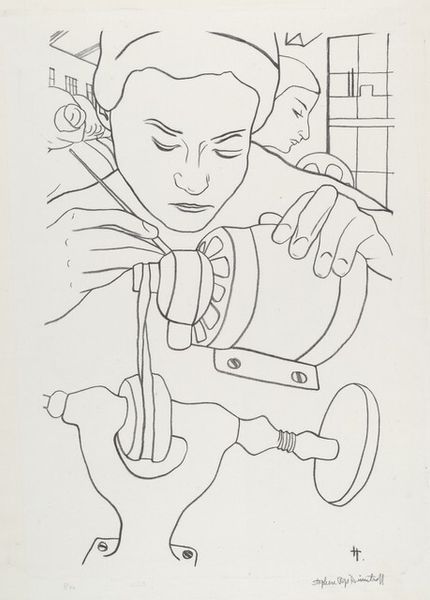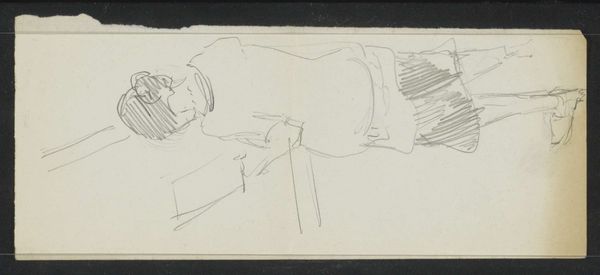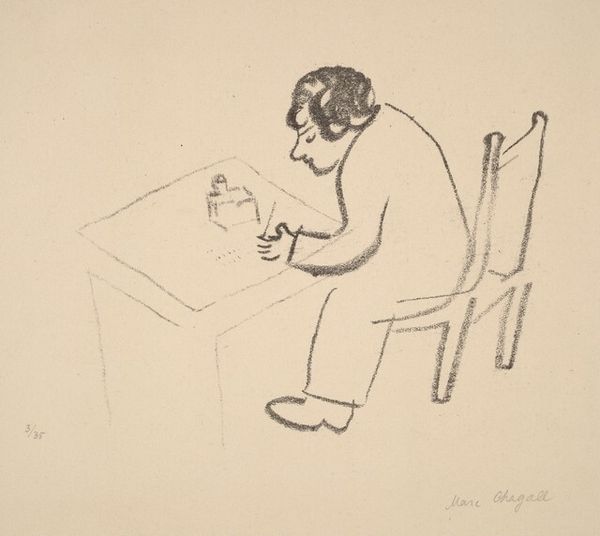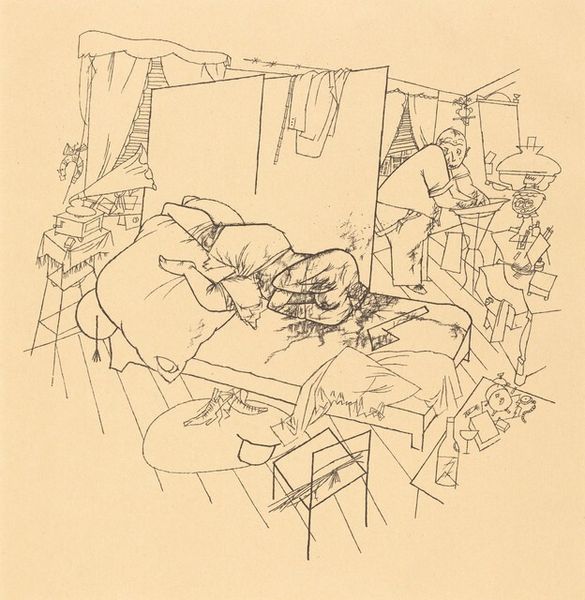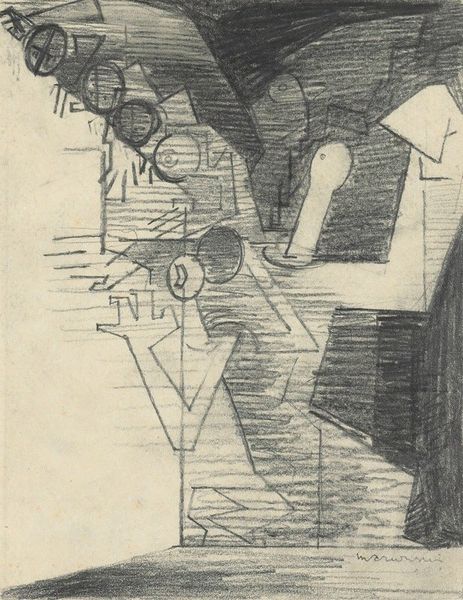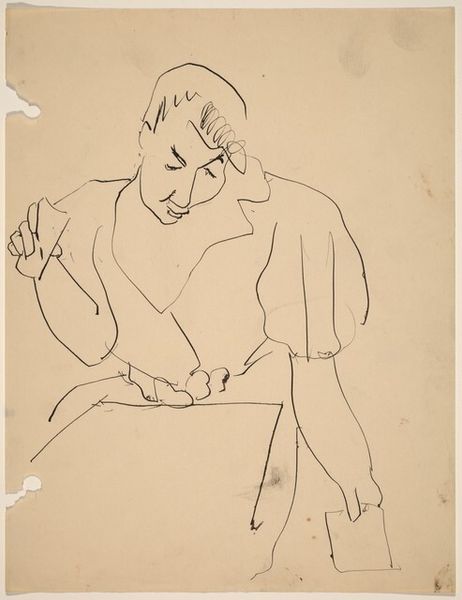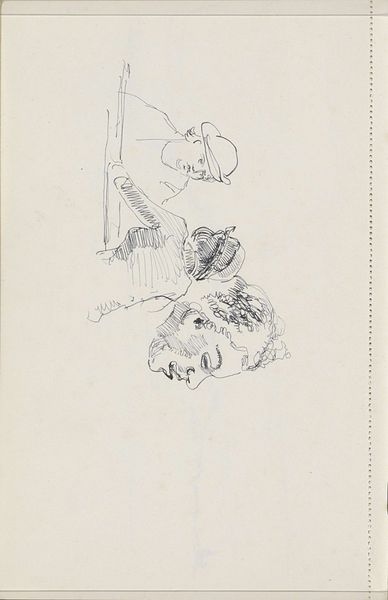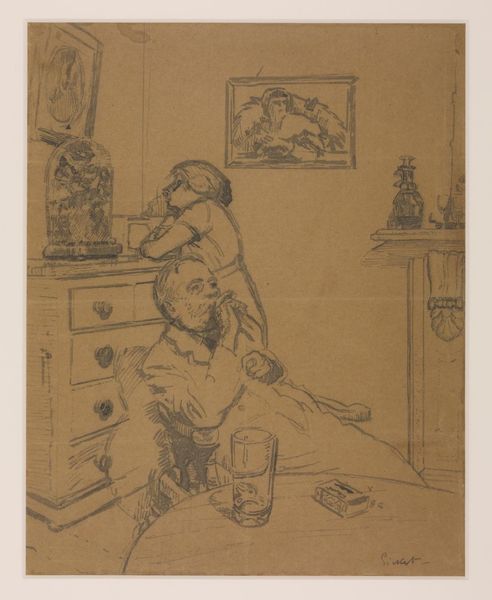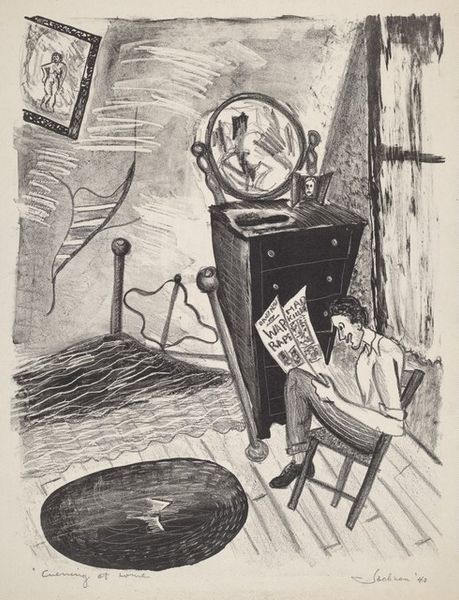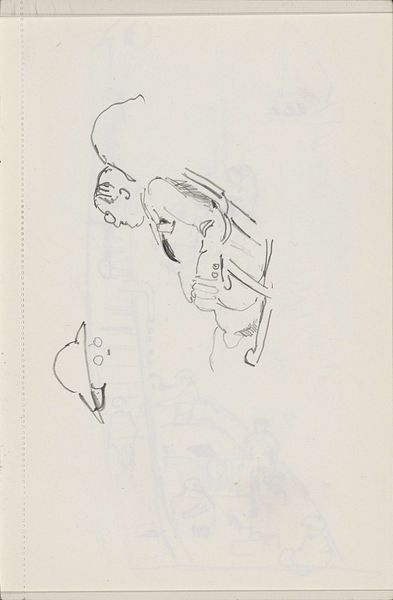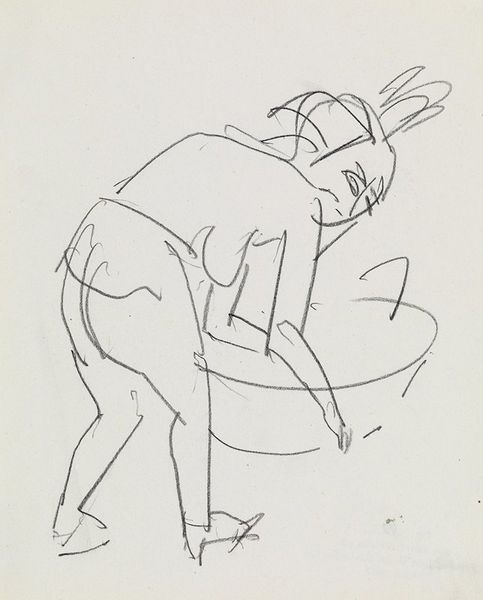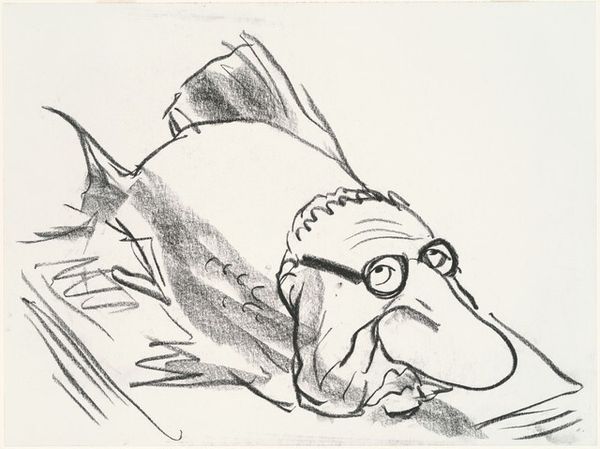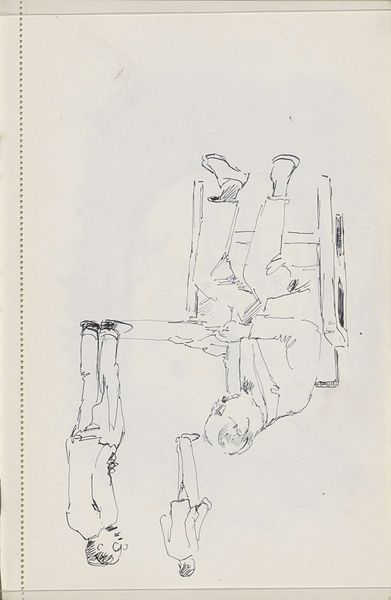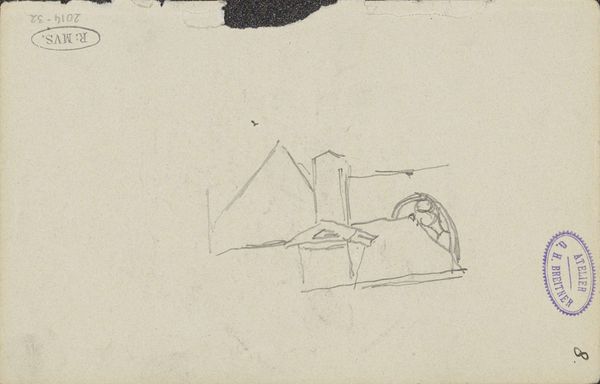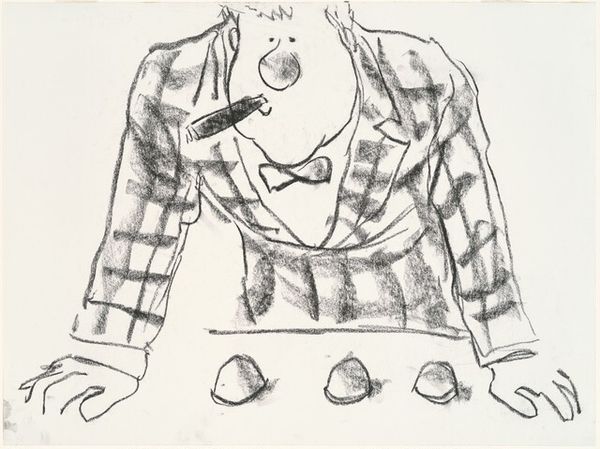
"Let those swim who can - the heavy may sink." ("Schwimme, wer schwimmen kann, und wer zu plump ist, geh' unter!" (I.Akt, 1.Szene)) 1921
0:00
0:00
drawing, print, ink
#
drawing
#
comic strip sketch
#
new-objectivity
#
thin stroke sketch
# print
#
caricature
#
german-expressionism
#
figuration
#
ink line art
#
linework heavy
#
ink
#
idea generation sketch
#
sketchwork
#
ink drawing experimentation
#
dynamic sketch
#
pen-ink sketch
#
expressionism
#
line
#
initial sketch
Dimensions: image: 43.66 × 37.94 cm (17 3/16 × 14 15/16 in.)
Copyright: National Gallery of Art: CC0 1.0
Editor: This is George Grosz's ink drawing, "Let those swim who can - the heavy may sink," created in 1921. The loose linework gives the whole composition a feeling of unease, don't you think? What strikes you about its formal qualities? Curator: Indeed. The distortion of perspective is quite effective. Note how the converging lines of the floorboards create a sense of imbalance. What do you make of the contrast between the sparsely rendered room and the figure’s more detailed form? Editor: I guess that contrast emphasizes his vulnerability and isolation within that room. Is that what you mean by "more detailed?" I find his figure simple in comparison to some Expressionist pieces. Curator: Note the deeply etched lines around the eyes and mouth and in the clothes, juxtaposed against the lighter treatment of the surrounding space. These are structural tools. It directs the eye to the emotional core. Have you noticed the lamp’s prominent position? How might this element function compositionally? Editor: I see what you mean. The lamp seems oversized, doesn’t it? The way it looms, it makes him look even more diminished. Do you think there is a link to moral decay in Expressionist art? Curator: Perhaps the lamp symbolises a false enlightenment, juxtaposed to the misery of the slumped subject. We should analyze all formal elements. Is there a semantic connection through these aesthetic tools? Editor: That's a powerful interpretation, especially with the title included. I never considered the lamp like that. Curator: It's crucial to analyse each element's placement and rendering to find potential resonances. Every deliberate aesthetic decision contributes to the overall structure of the composition. Editor: I am now looking closely at the various forms, their geometry and perspective. I’ve learned a lot by looking for those semantic connections in visual forms. Curator: Precisely! Hopefully, such analyses have provided valuable analytical tools that may lead to more rewarding encounters.
Comments
No comments
Be the first to comment and join the conversation on the ultimate creative platform.
